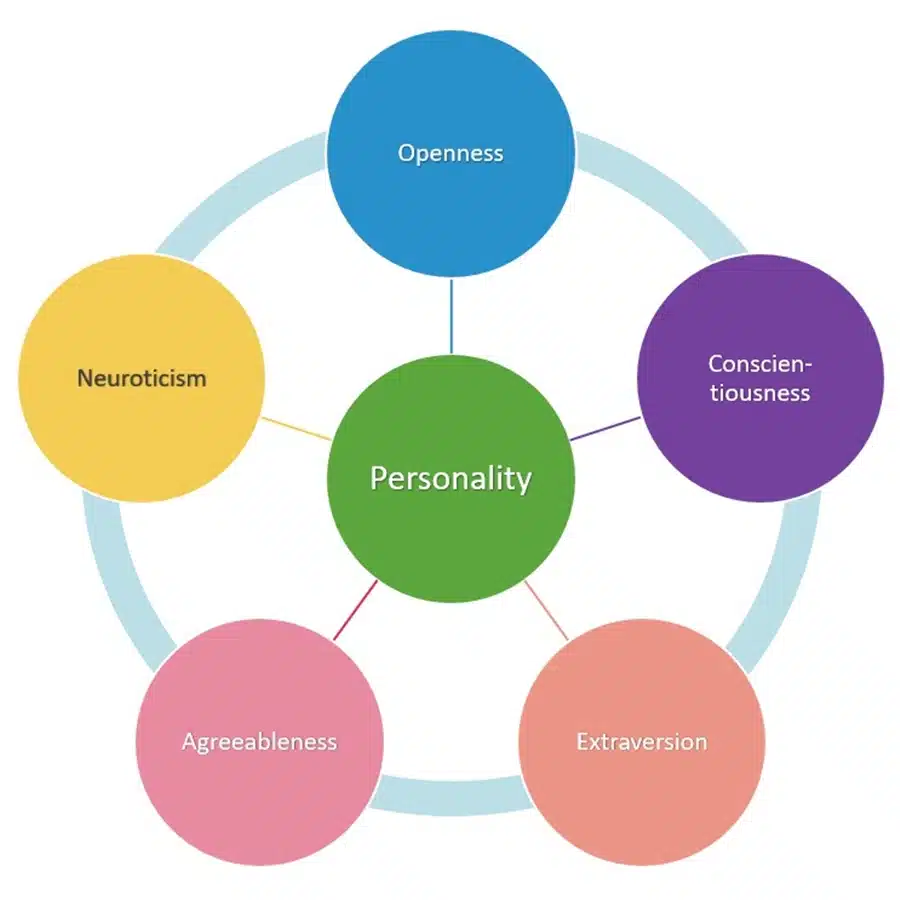One of the most significant questions that humanity has contemplated throughout history is, “What makes us who we are?” At the heart of this inquiry lies the study of personality, a fascinating area within the broader field of psychology. Among the numerous theories developed to explain personality, Trait Theory has proven particularly influential.
This theory posits that our behaviors, emotions, and thoughts are guided by relatively stable traits, providing us with a structured way to measure and understand personality. This comprehensive guide aims to delve into the details of Trait Theory, its historical development, and the conclusions we can glean from it.
What is Trait Theory?
Trait Theory, also known as the trait approach to personality, is a psychological framework that posits individuals possess consistent and enduring traits or characteristics. These traits, according to the theory, dictate our behaviors, emotions, and thoughts across different circumstances and over time.
Traits are considered to be inherent aspects of our personality, functioning as the fundamental building blocks that construct the uniqueness of our character. These traits can manifest in specific ways, such as habits, attitudes, or preferences, or in broader patterns, such as general dispositions towards honesty, introversion, or optimism.
One of the defining elements of Trait Theory is the belief that these traits can be measured and quantified. This means we can assign values to traits, enabling us to compare and contrast them among different individuals. Ultimately, the theory suggests that by understanding an individual’s traits, we can predict how they will behave in a variety of situations.

Historical Background of Trait Theory
The idea of traits as defining aspects of our personality is an age-old concept, traced back to the time of the ancient Greeks. However, the modern form of Trait Theory began to take shape in the early 20th century, with contributions from several key psychologists:
- Gordon Allport: Often referred to as the pioneer of Trait Theory, Allport proposed in the 1930s that individual personalities comprise a unique blend of traits. He classified traits into three levels based on their influence on behavior: Cardinal traits, the most dominant traits that can define a person’s life; Central traits, the general characteristics that form the foundation of our personality; and Secondary traits, the more situational or preferential traits.
- Raymond Cattell: Expanding on Allport’s work, Cattell applied a statistical technique called factor analysis in the 1940s and 1950s. This analysis allowed him to distill Allport’s extensive list of traits into 16 primary personality factors, paving the way for his 16 Personality Factor (16PF) model.
- Hans Eysenck: Eysenck took the simplification of trait theory further in the mid-20th century. He proposed just three fundamental dimensions of personality: Extraversion-Introversion, Neuroticism-Stability, and Psychoticism. Eysenck’s model suggested that these broad categories encompassed the significant variations in human personality.
- The Big Five: The most widely accepted incarnation of Trait Theory today is the Big Five or Five-Factor Model. This theory, which emerged from various independent researchers in the 1980s, suggests that personality comprises five broad dimensions: Openness, Conscientiousness, Extraversion, Agreeableness, and Neuroticism (often remembered by the acronym OCEAN).

Conclusions Drawn from Trait Theory
The exploration and application of Trait Theory in the realm of personality psychology has led to several key conclusions.
1. Quantifiable Personality
Trait Theory provides a scientific approach to personality, asserting that traits can be quantified or measured. This conclusion allows personality to be studied in a structured, empirical way. It’s particularly valuable in research and practical contexts such as clinical psychology and organizational behavior, as it offers a measurable way to understand and compare individuals’ personalities.
2. Predictability of Behavior
According to Trait Theory, an individual’s traits can predict their behavior across different situations. This means that once we understand someone’s traits, we can anticipate their likely responses or actions in various contexts. This conclusion has substantial implications in many fields such as occupational psychology, personal relationships, and marketing.
3. Consistency and Stability of Personality
Trait Theory suggests that traits are relatively stable and consistent over time and across situations. This conclusion implies that our personality, shaped by these traits, is largely constant throughout our life, providing a sense of continuity in our understanding of ourselves and others.
4. Appreciation of Individual Differences
Trait Theory emphasizes that each person possesses a unique combination of traits, leading to the conclusion that individual differences are fundamental in personality. This promotes a greater understanding and acceptance of diversity in human behavior and personalities.
5. Limitations of Trait Theory
Despite its many contributions, conclusions from Trait Theory also highlight its limitations. The theory has been critiqued for its deterministic nature, implying that our behavior is entirely governed by our traits without much room for change or flexibility. Moreover, it’s often criticized for not considering situational and environmental factors, personal growth, and cultural differences in the development and expression of personality traits.
What Conclusions Can We Draw From Trait Theory: Conclusion
Trait Theory has been instrumental in shaping our understanding of human personality. It posits that our unique sets of traits shape our behavior, offering a structured and measurable framework to understand and predict human behavior. Although the theory has its limitations and faces certain criticisms, it nonetheless remains a cornerstone in the field of personality psychology.
By exploring and drawing conclusions from Trait Theory, we gain insightful perspectives into ourselves and others, offering valuable applications ranging from enhancing workplace dynamics and improving team performance to fostering interpersonal relationships and self-improvement strategies.


















